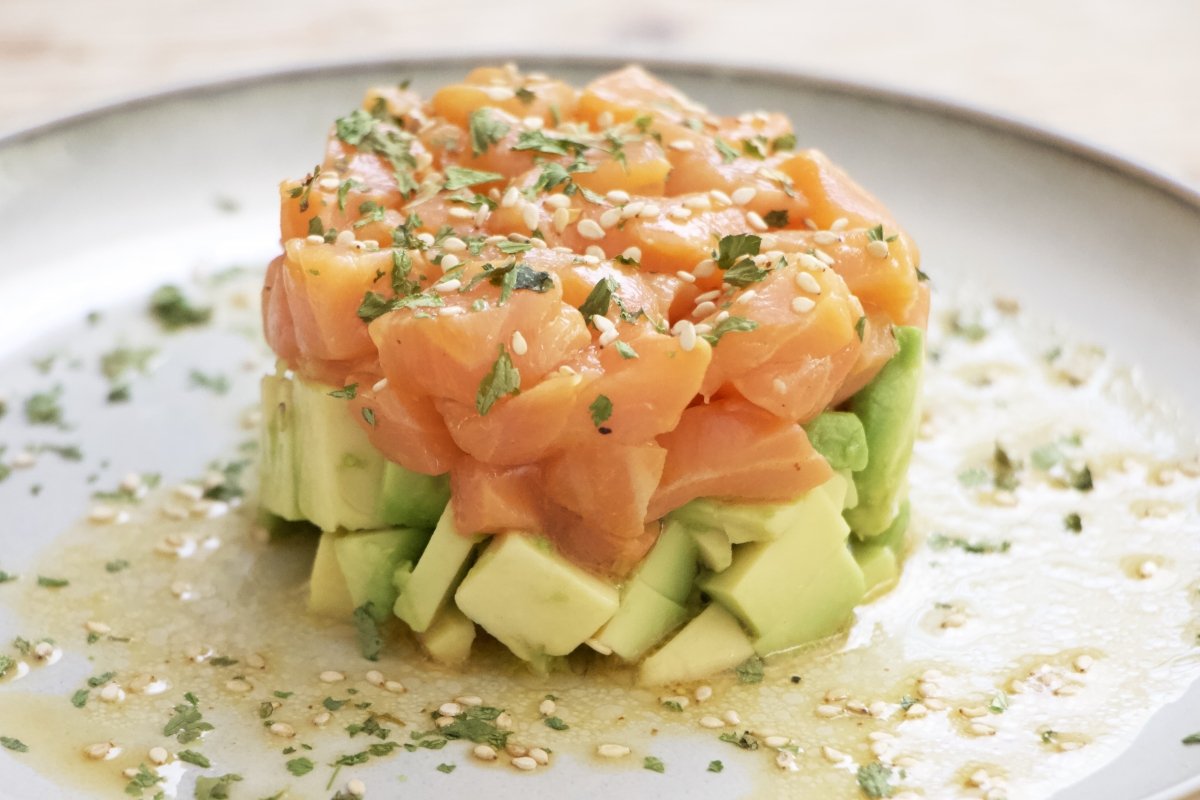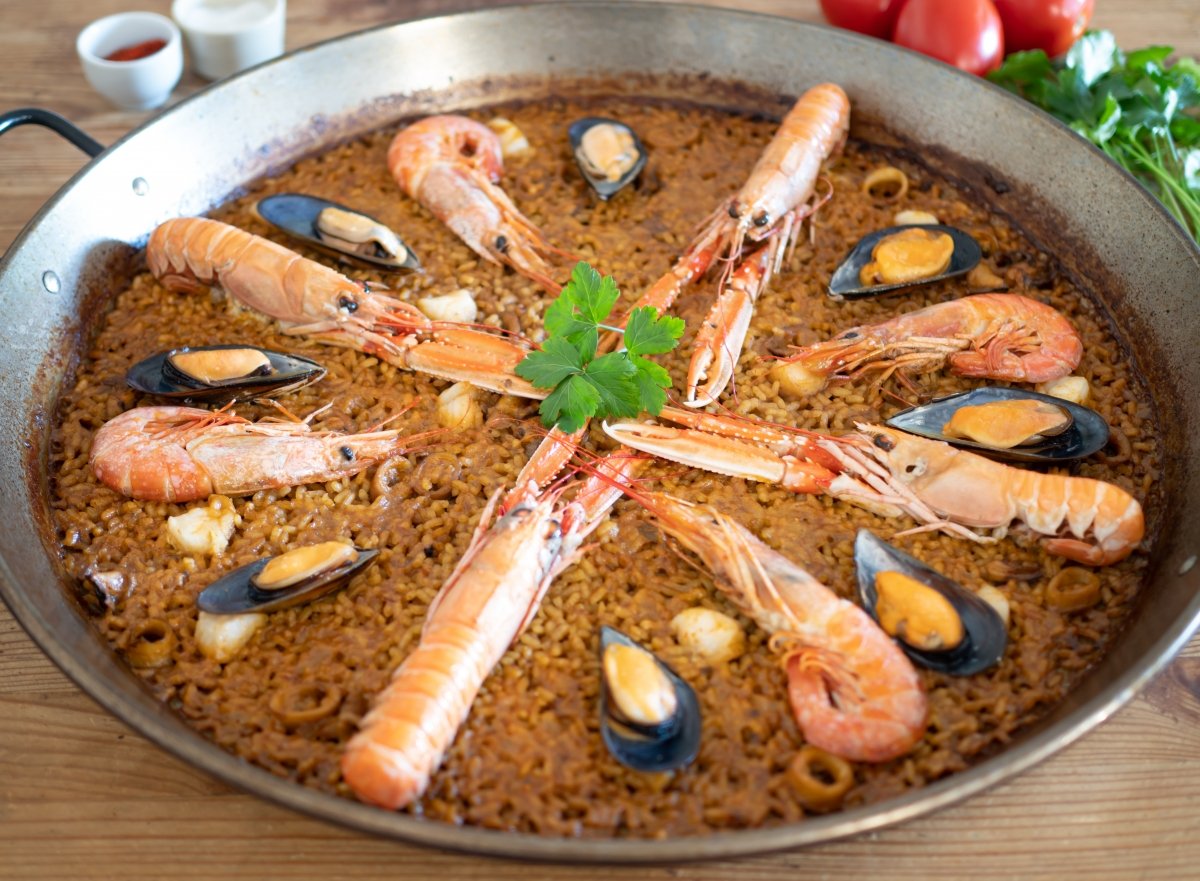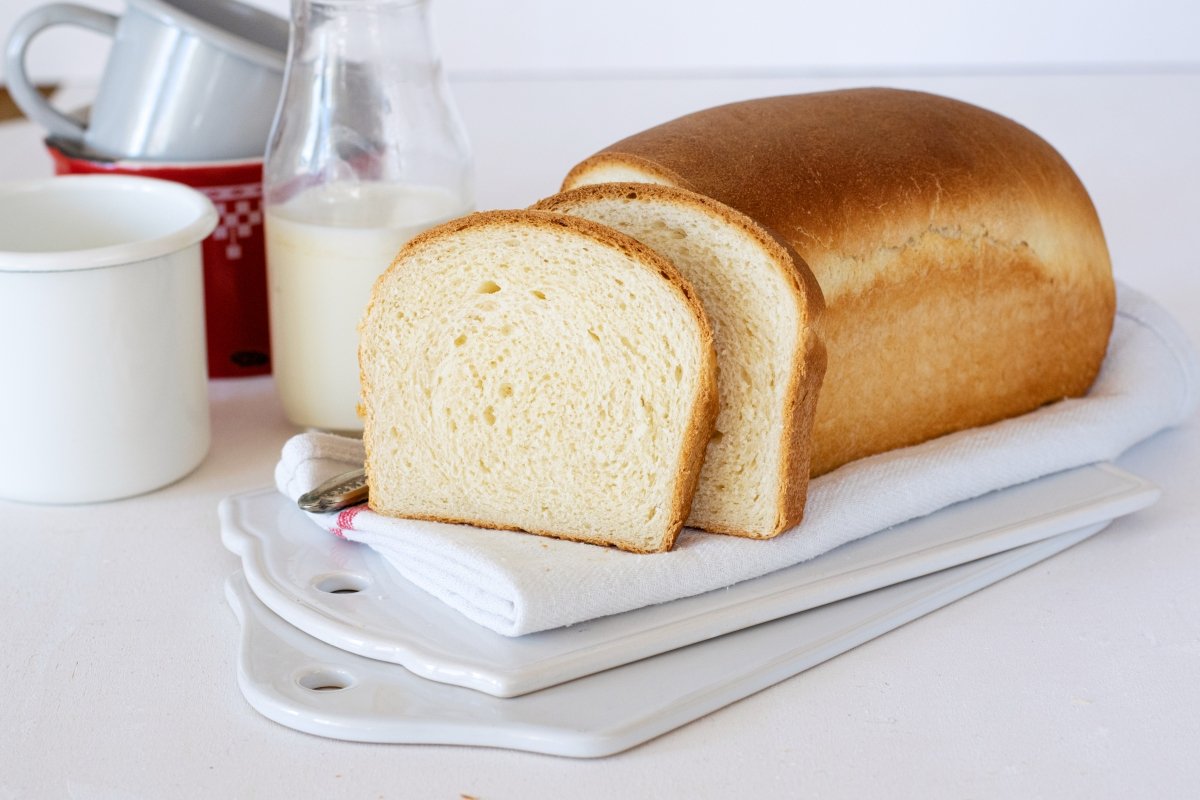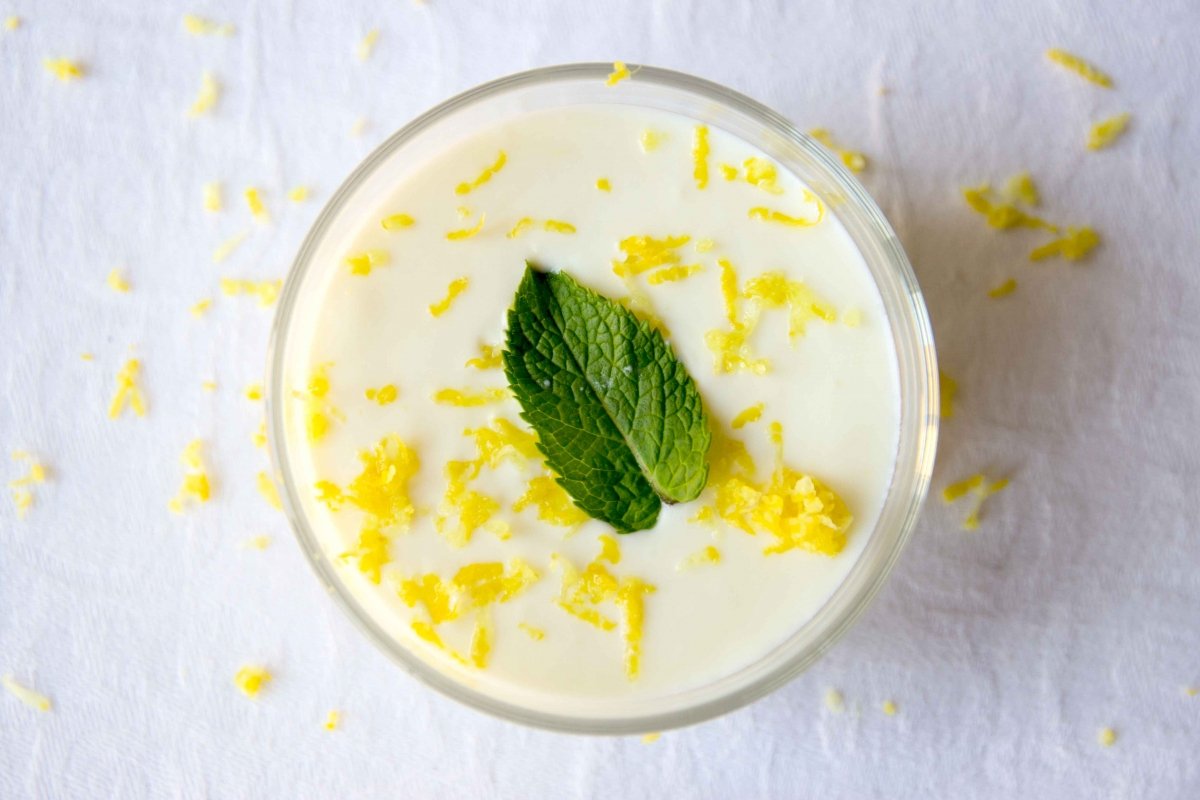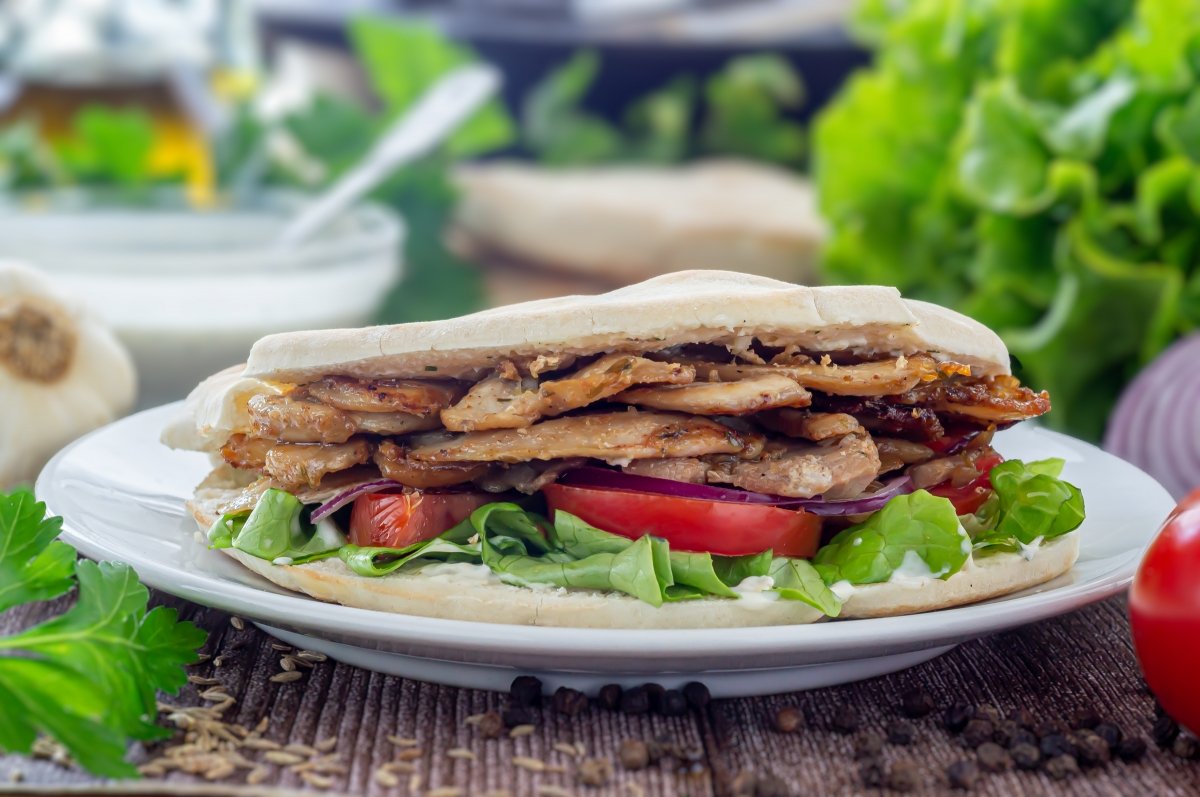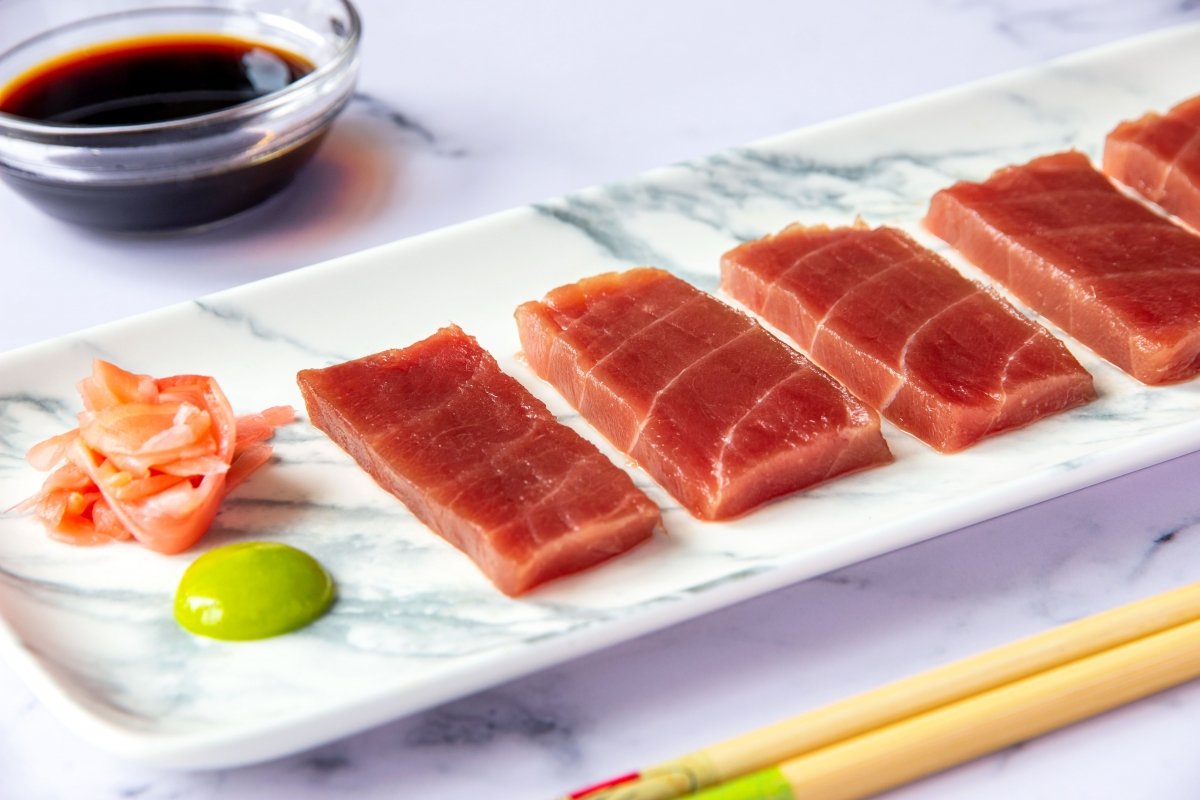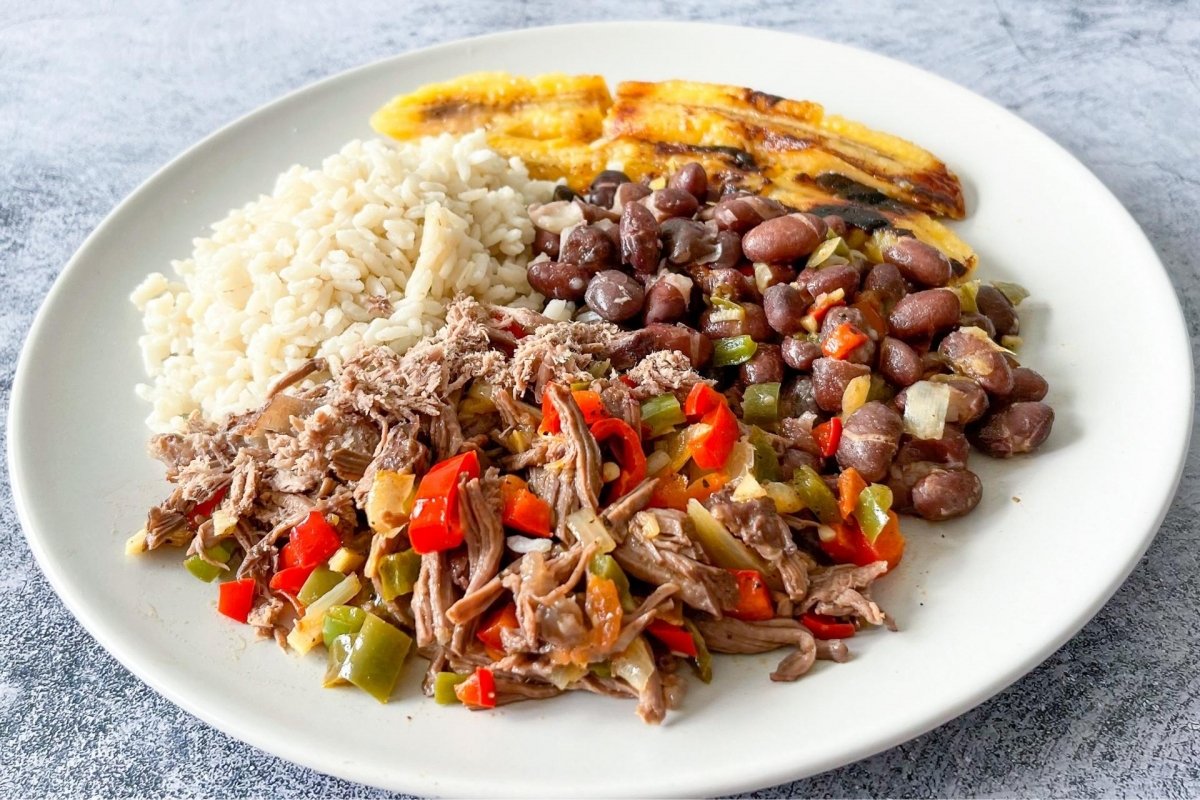Polbo á Feira (Galician Style Octopus)
The polbo á feira, or Galician-style octopus as it is known outside Galicia, is one of the most representative dishes of Galician cuisine. Here is the step-by-step recipe.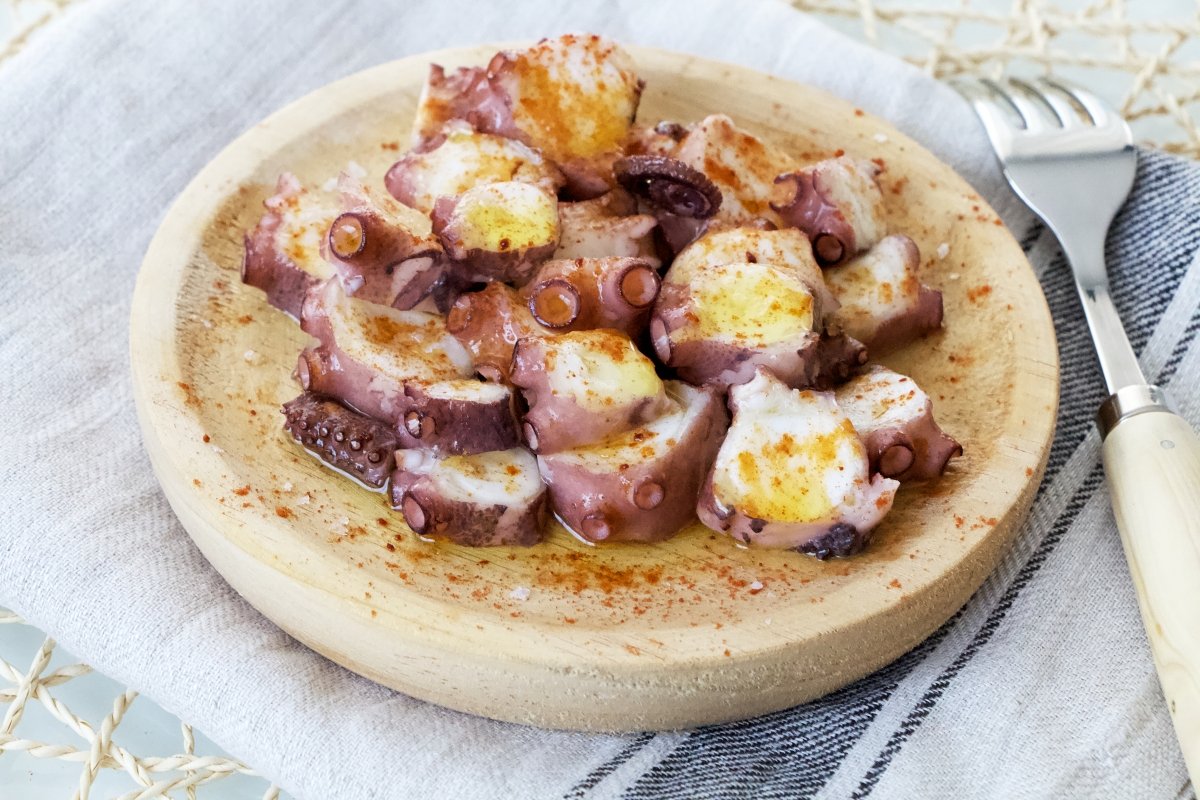
The octopus dish polbo á feira takes its name from the Galician fairs or pilgrimages where the octopus is served under huge tents in typical wooden dishes before a crowd of people seated on the sides of long tables. On those tables, simplicity frames this delicious delicacy; paper napkin dispensers, flat toothpicks that can be used as cutlery and plastic bread baskets in which a unique bread is served.
In a corner, next to these tents, the pulpeiras prepare this dish in a perfectly coordinated and systematic way. First they cook the whole octopuses in huge copper pots with water intensely colored by the octopuses already cooked in it. Next to the copper pots on a counter, they cut the cooked octopuses with scissors to serve them on wooden plates that have previously been soaked with the cooking water and then stacked on one side. Then, they season the octopus slices with a good splash of mild extra virgin olive oil, sweet paprika, a bit of hot paprika and coarse salt; after that, the octopus goes to the table. To drink, a good Ribeiro wine served in a cup since, as it is well known in Galicia, you do not drink water with octopus.
The simplicity of this recipe allows us to recreate the polbo á feira in our homes with more than satisfactory results. The only downside in our preparation is the absence of the wonderful stamp of a feira galega.
In order to prepare the polbo á feira at home, we do not need a copper pot; a large stainless steel one will be perfect. However, the most important thing is to begin with a previously frozen octopus. To do so, we can either buy our octopus directly frozen, which will undoubtedly be the easiest way, or we can buy it fresh, clean it thoroughly and freeze it for at least one week. By freezing the octopus, the fibers of the meat break and so it becomes tender after cooking. In the olden days, in order to achieve the same effect, pulpeiras beat the octopus against a hard surface, such as a stone, which is said to have given rise to the Spanish expression “te va a caer la del pulpo” (you are going to get it). Fortunately, nowadays a humble freezer can save us this effort
Below, we show you in detail how to prepare a delicious polbo á feira at home.
Recipe information
- Preparation time: 10 minutes
- Cooking time: 40 minutes
- Total time: 50 minutes
- Yield: 6 serves
- Category: main course
- Type of cuisine: Spanish
- Calories per serving (kcal): 643
Ingredients for Polbo á Feira (Galician Style Octopus)
- 1 octopus of about 4.5 pounds
- 1 onion
- Extra virgin olive oil
- Sweet paprika
- Hot paprika
- Coarse salt
- Potatoes (optional)

How to make Polbo á Feira (Galician Style Octopus)
As we explained in the introduction, we will start with a frozen octopus of about 4.5 pounds that we will thaw in the refrigerator the day before preparing it. Once thawed, wash it thoroughly with cold water under running tap water.
The first step to prepare the polbo á feira is to cook it, although first we have to "scare" it. In order to do so, boil water with 1 onion cut in half in a pot large enough so that the water completely covers the octopus. When the water starts to boil, take the octopus by the head, dip it into the boiling water and remove it. Repeat this step 3 times. This is what in Galicia is called “scaring the octopus” and is done so that the skin does not peel off from the meat when cooking.
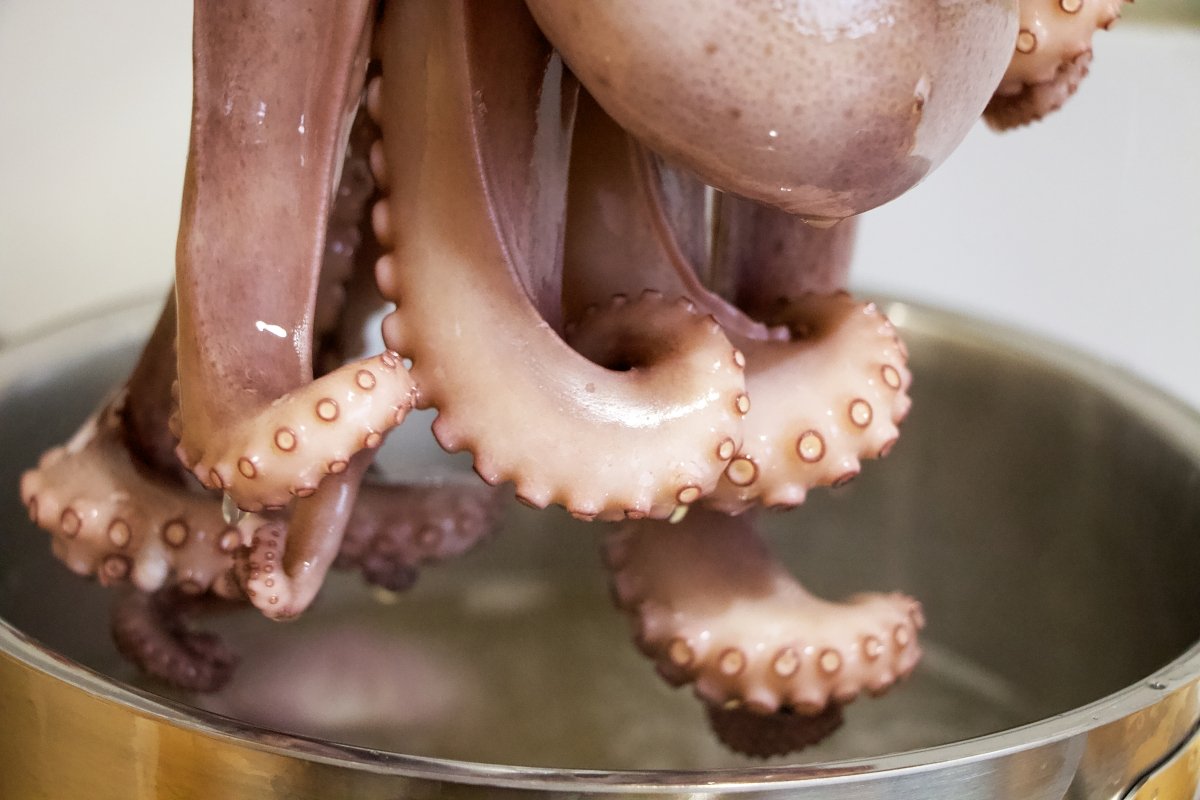
Once the octopus is “scared”, submerge it in the boiling water, lower the heat a little to keep it medium-high when cooking and let it cook between 30 and 40 minutes with the pot uncovered. The exact cooking point will depend on the size of the octopus and the hardness of the water.
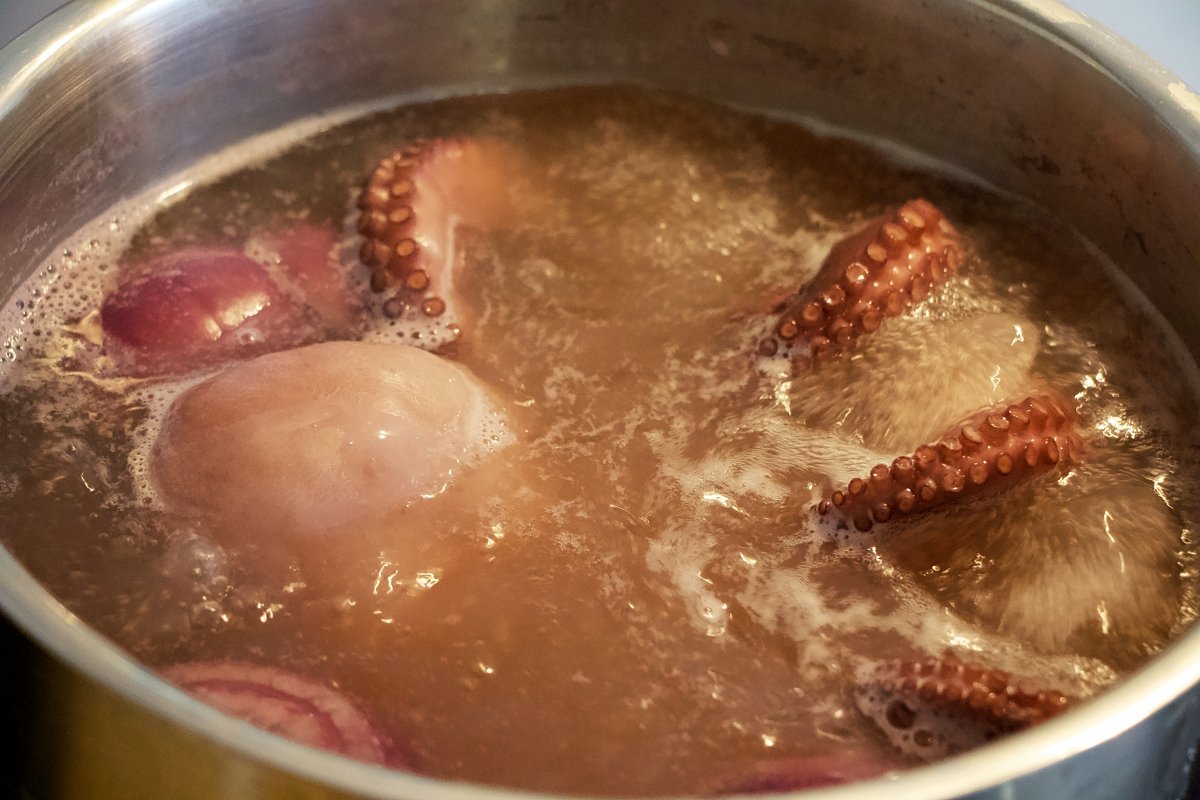
Once the cooking time indicated in the previous step has elapsed, check whether the octopus is done by pricking the top of one of the tentacles with a fork. It should feel tender, although with slight resistance. If it is hard, let it cook a little longer.
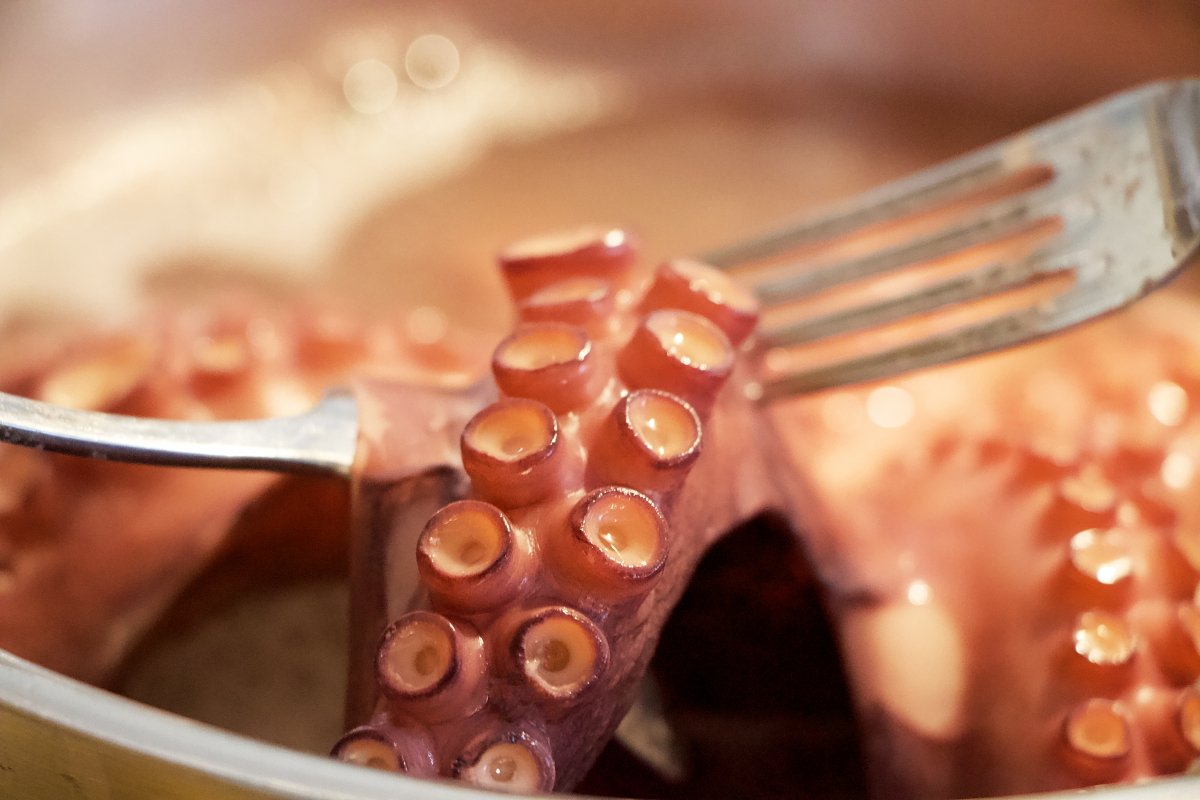
When the octopus has reached the indicated cooking point, remove the pot from the heat, cover it and let the octopus rest in the water for 20 minutes. After this time, remove the octopus from the pot and cut the tentacles into 0.5 - 1-inch-thick slices using kitchen scissors. Reserve the head for another preparation, such as a stir-fry or croquettes.
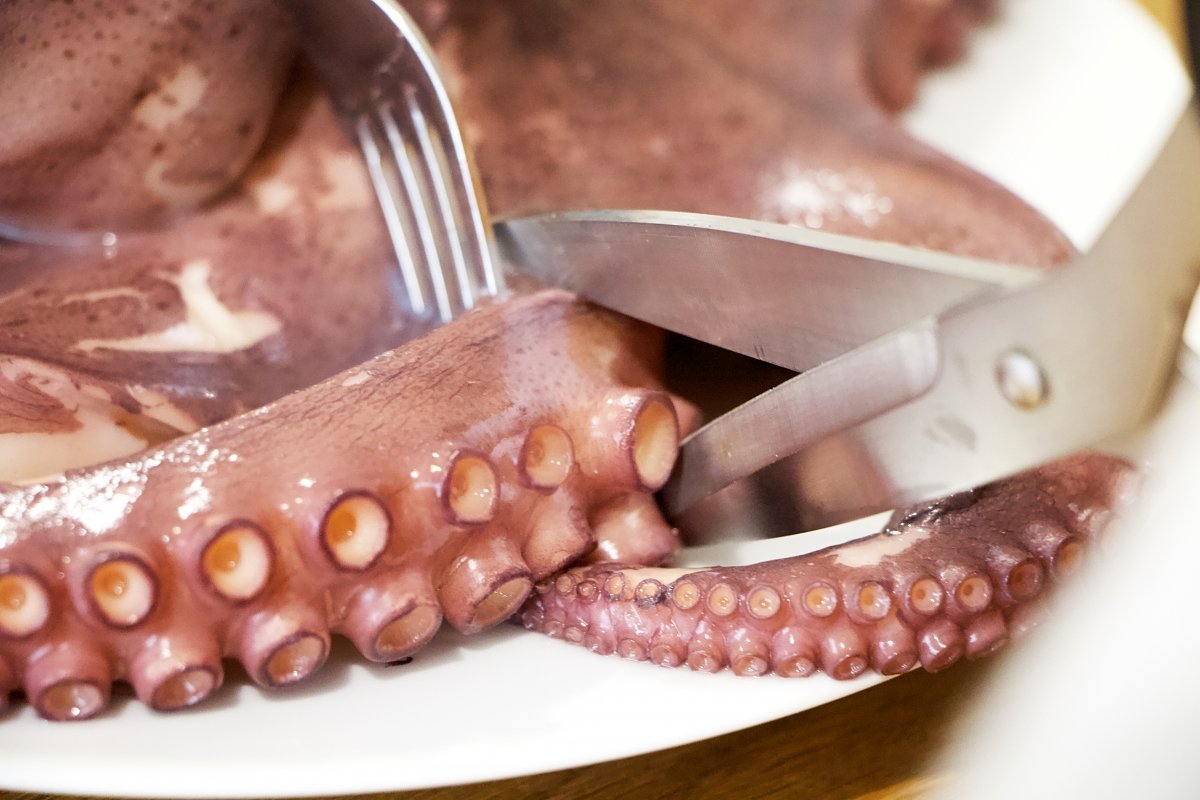
If you want to serve the octopus with potatoes, polbo á feira con cachelos as it is known in Galicia, we will use the cooking water from the octopus to cook the potatoes while we are cutting the octopus, although serving the octopus with potatoes is completely optional.
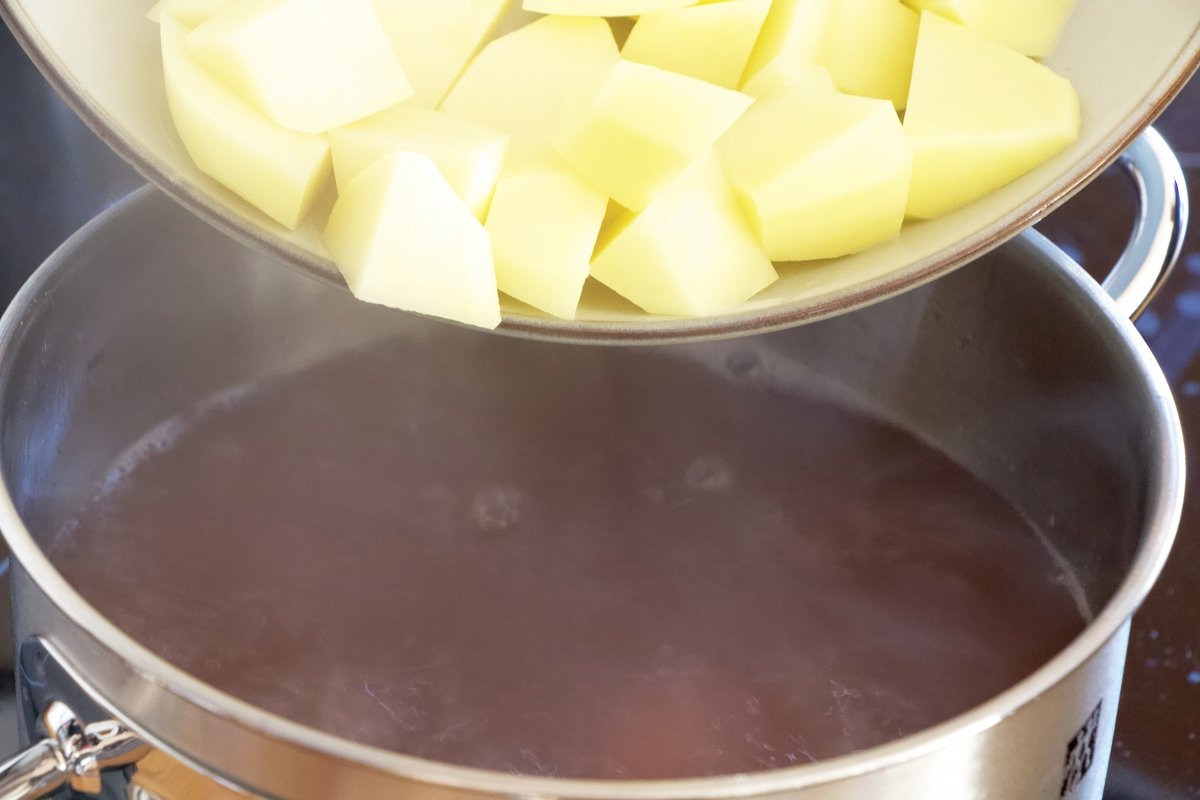
To finish, serve the octopus slices on a plate, typically a wooden one, and dress it with extra virgin olive oil, sweet or spicy paprika or a mixture of both according to the taste of your guests and, finally, coarse salt. If you want to accompany the octopus with potatoes, serve them in a separate dish.
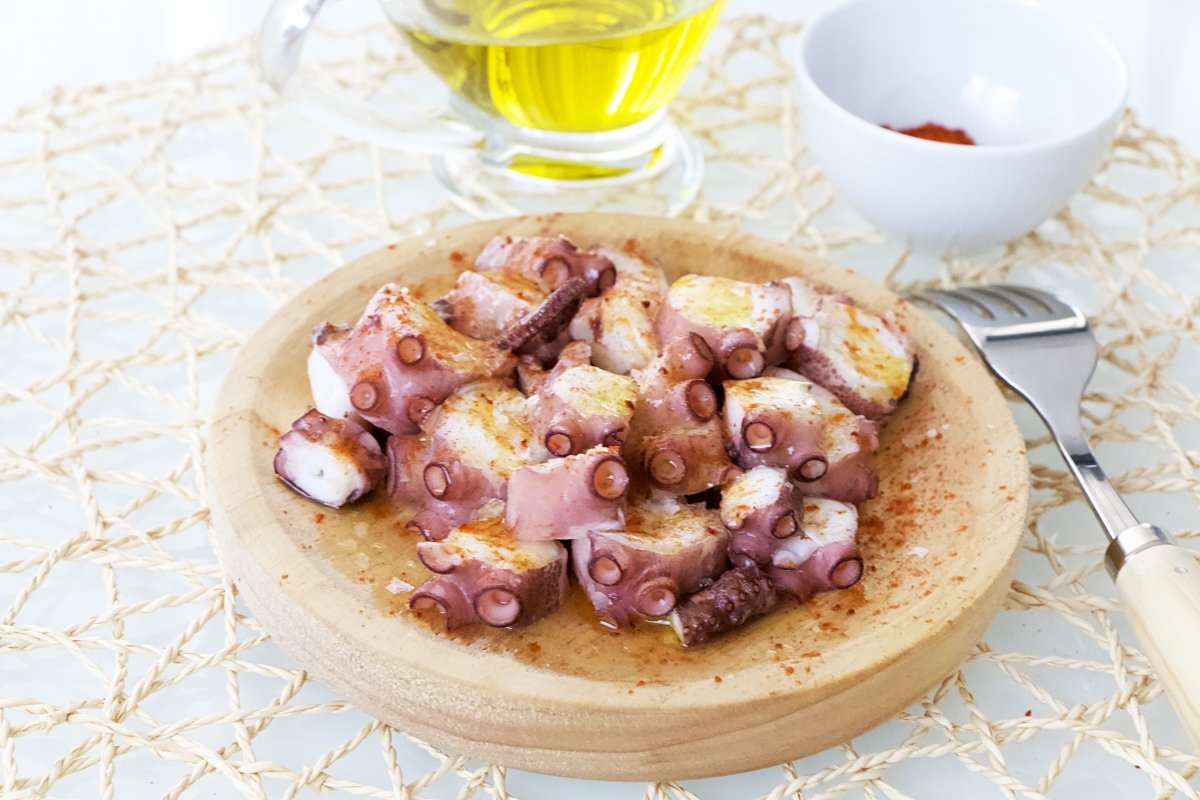
Easy instructions
- Wash the thawed octopus with cold water, boil water with an onion cut in half and “scare” the octopus by dipping it 3 times in the boiling water before cooking
- Cook the octopus for 30 to 40 minutes
- Check the doneness of the octopus by pricking it on the top of one tentacle: it should feel tender with slight resistance
- Once ready, remove the pot from the heat, cover it and let the octopus rest for 20 minutes. Then, cut the octopus into slices with scissors
- If you want to serve it with potatoes, cook them in the water used to cook the octopus and serve them in a separate dish
- Dress the octopus with extra virgin olive oil, sweet paprika, hot paprika and coarse salt


